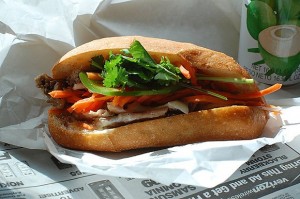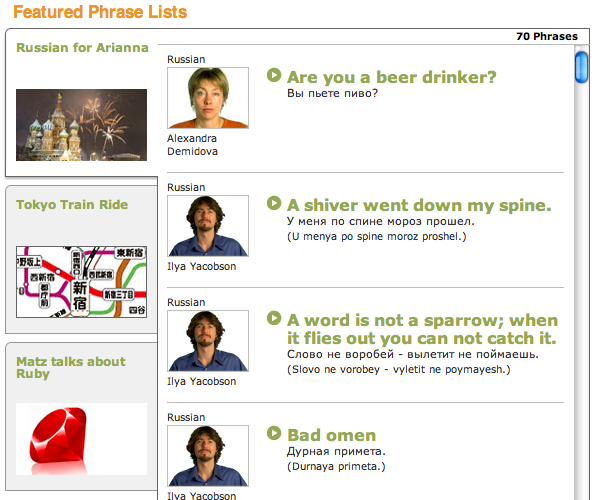前回のコーヒ編はお役に立ったでしょうか? 今回は、サンドイッチの注文の仕方を紹介したいと思います。アメリカでは、サンドイッチを注文する時に、パンの種類やマヨネーズの有無などを指定できます。
メニューにも普通は、以下のようなことが書かれています。
“All Sandwiches Served with Homemade Fries or Fresh Green Salad.
(全てのサンドイッチには、ホームメイドのフレンチフライかグリーンサラダがつきます。)
Also Served with your choice of Lettuce, Tomato, Red Onions, Pickles.
(レタス、トマト、赤タマネギ、ピクルスの選択ができます。)
Available on Freshly Baked Bread Including French, Wheat, Sourdough, and Dutch
Crunch.”
(新鮮なフランスパン、麦芽パン、サワードパン、ダッチクランチがあります。)
サンドイッチを注文する時、前もって決めときたいのは、以下のとおりです。
- どのサンドイッチにするのか
(メニューから注文したいサンドイッチを決めます。BLT、ターキーサンドイッチなど、など) - パンの種類
(French, Wheat, Sourdough, Dutch Crunch – フランスパン、麦芽パン、サワードパン、ダッチクランチ) - マヨネーズ無し
(no mayo – マヨネーズ無し) - マスタード無し
(no mustard – マスタード無し) - マスタードの種類
(dijon mustard, mustard – ディジョンマスタード、マスタード) - トマト無し
(no tomato – トマト無し) - レタス無し
(no lettuce – レタス無し) - ピクルス無し
(no pickles – ピクルス無し) - タマネギ無し
(no onion – タマネギ無し) - チーズの種類
( American, Cheddar, Jack or Swiss cheese – アメリカンチーズ、チェダーチーズ、ジャックチーズ、又は、スイスチーズ)
コーンビーフサンドイッチをライ麦パンで注文する場合
Could I have a Corned Beef on Rye?
ターキーサンドイッチを小麦パンでマヨネーズ無しで他は全部入れて注文する場合
Can I have a Turkey on wheat, no mayo, everything else?
BLT(ベーコン、レタス、トマトのサンドイッチ)にアボガドとスイスチーズをつけてもらう場合
Can I have a BLT with Avocado and Swiss?
また、サンドイッチを注文する際に、よく店員さんに聞かれるのが、以下のとおりです。
“Everything?”
どうゆう意味かというと、マヨネーズ、マスタード、トマト、レタス、ピクルス、の全部をサンドイッチにいれてもいいの?ということです。
“What kind of cheese?”
どのチーズがいいですか?ということです。
— サンフランシスコのお店 —
今回から、サンフランシスコの地元のお店もいくつか紹介したいと思います。サンフランシスコに来られたおりに良かったら立ち寄ってみてください。
Four Barrel Coffee
コーヒー編で紹介したFour Barrel Coffeeは、Valencia streetの14th street と15
streetの間にあります。とてもオープンで、モダンなカフェです。ドーナッツや、クロワッサンなども美味しいので、Mission地区付近を散策した時に休憩代わりに立ち寄って見られたらいかがでしょうか。
Ike’s Place
サンドイッチのメニューで、紹介したIke’s place
には、個人的に、立ち寄ったことが無いので、お味の方は分かりませんが、サンドイッチとハンバーガー
、自家製のソースで人気はあるようです。Castoro地区にあります。
Saigon Sandwich
Saigon
Sandowitch(サイゴンサンドイッチ)は、ベトナムスタイルのサンドイッチです。サンフランシスコに来られたおりには是非食べてください。とても美味しいうえにお手頃なお値段です。Civic
Center/Tenderloin地区にあります。


